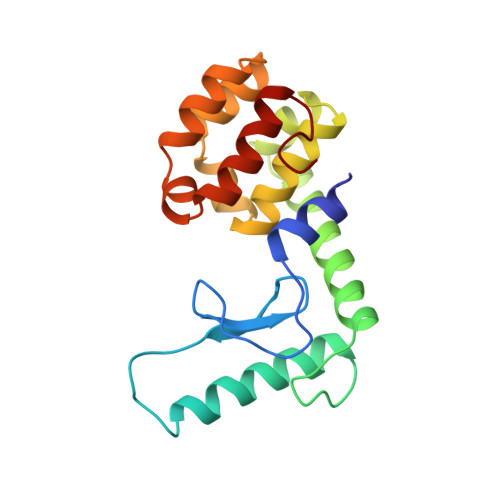Structural characterization of an engineered tandem repeat contrasts the importance of context and sequence in protein folding.
Sagermann, M., Baase, W.A., Matthews, B.W.(1999) Proc Natl Acad Sci U S A 96: 6078-6083
- PubMed: 10339544
- DOI: https://doi.org/10.1073/pnas.96.11.6078
- Primary Citation of Related Structures:
261L, 262L - PubMed Abstract:
To test a different approach to understanding the relationship between the sequence of part of a protein and its conformation in the overall folded structure, the amino acid sequence corresponding to an alpha-helix of T4 lysozyme was duplicated in tandem. The presence of such a sequence repeat provides the protein with "choices" during folding. The mutant protein folds with almost wild-type stability, is active, and crystallizes in two different space groups, one isomorphous with wild type and the other with two molecules in the asymmetric unit. The fold of the mutant is essentially the same in all cases, showing that the inserted segment has a well-defined structure. More than half of the inserted residues are themselves helical and extend the helix present in the wild-type protein. Participation of additional duplicated residues in this helix would have required major disruption of the parent structure. The results clearly show that the residues within the duplicated sequence tend to maintain a helical conformation even though the packing interactions with the remainder of the protein are different from those of the original helix. It supports the hypothesis that the structures of individual alpha-helices are determined predominantly by the nature of the amino acids within the helix, rather than the structural environment provided by the rest of the protein.
Organizational Affiliation:
Institute of Molecular Biology, Howard Hughes Medical Institute, and Department of Physics, University of Oregon, Eugene, OR 97403-1229, USA.














